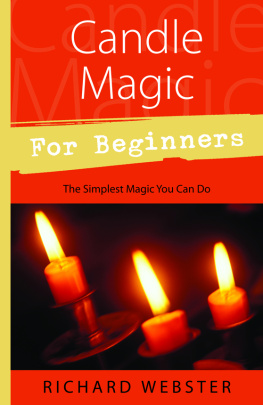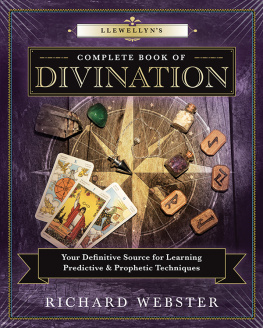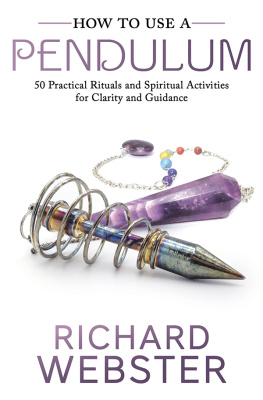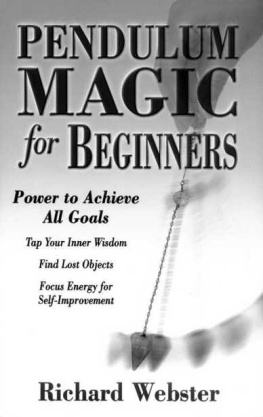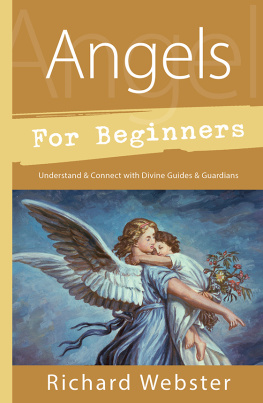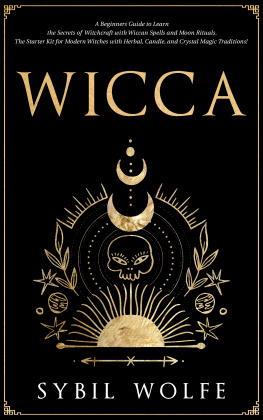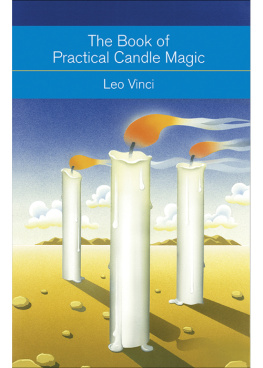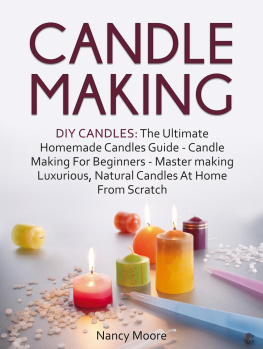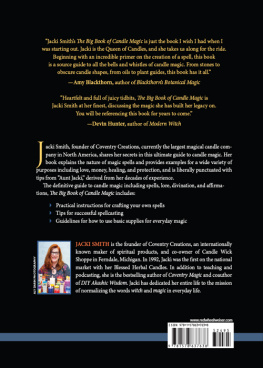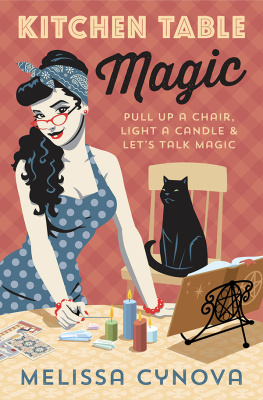
About the Author
Richard Webster is the author of twenty-eight books published by Llewellyn during the past decade, as well as many others published in New Zealand and elsewhere. A resident of New Zealand, he travels extensively, giving workshops, seminars, and lectures on the topics of which he writes.
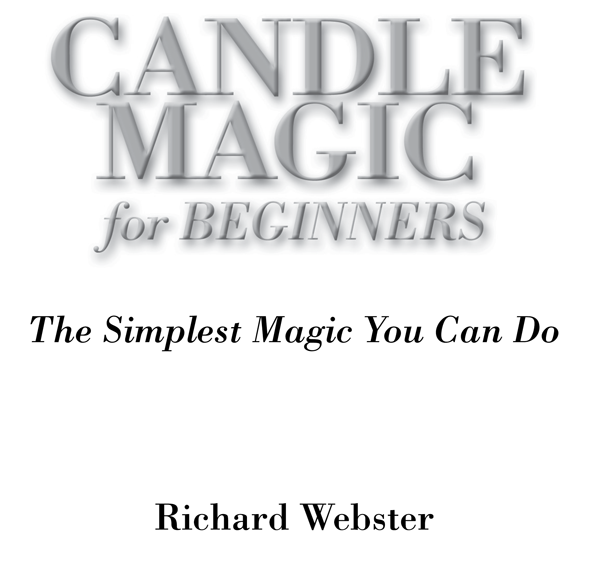
Llewellyn Publications
Woodbury, Minnesota
Copyright Information
Candle Magic for Beginners 2004 by Richard Webster.
All rights reserved. No part of this book may be used or reproduced in any matter whatsoever, including Internet usage, without written permission from Llewellyn Publications, except in the form of brief quotations embodied in critical articles and reviews.
As the purchaser of this e-book, you are granted the non-exclusive, non-transferable right to access and read the text of this e-book on screen. The text may not be otherwise reproduced, transmitted, downloaded, or recorded on any other storage device in any form or by any means.
Any unauthorized usage of the text without express written permission of the publisher is a violation of the authors copyright and is illegal and punishable by law.
First e-book edition 2012
E-book ISBN: 9780738723587
Cover design by Adrienne Zimiga
Cover image Ingram Publishing/SuperStock
Editing and interior design by Connie Hill
Interior art by Llewellyn Art Department
Llewellyn Publications is an imprint of Llewellyn Worldwide Ltd.
Llewellyn Publications does not participate in, endorse, or have any authority or responsibility concerning private business arrangements between our authors and the public.
Any Internet references contained in this work are current at publication time, but the publisher cannot guarantee that a specific reference will continue or be maintained. Please refer to the publishers website for links to current author websites.
Llewellyn Publications
Llewellyn Worldwide Ltd.
2143 Wooddale Drive
Woodbury, MN 55125
www.llewellyn.com
Manufactured in the United States of America
For my good friends
Erskine and Charlotte Payton
Contents
| What Is Candle Magic?
| Candles and Other Implements
| Color
| Magic with a Single Candle
| How to Prepare Your Candles
| Timing
| Fragrance
| Numerology and Candles
| The Five Elements
| Magical Alphabets
| Magic Squares
| Healing with Candles
| Candle Divination
| Candle Rituals
| How to Make Your Own Candles
Conclusion
| Elements and Signs for the Years 19002008
| Magical Alphabets
| Planetary Hours
Introduction
My introduction to candle magic came when I was sixteen years old. I told a school friend about a problem I had, and received an unexpected reply. He suggested I burn some candles. His mother regularly used candle magic, and he had picked up the basics of the art. He guided me through a short ritual, and despite my skepticism, my problem disappeared. I was still not totally convinced that burning candles had resolved the situation, but I became intrigued and have been exploring the subject ever since. Over the years I have used candle magic to help me with a variety of difficulties, and many goals. I have benefited enormously from candle magic, even if on occasions the aid came in unexpected ways.
It is not surprising that candle magic is so popular, as there is something special about lighting a candle and watching it burn. People have always been fascinated with fire, and all around the world have used flame as an accompaniment to prayer and magic for thousands of years. Primitive people danced and sang around fires to invoke the spirits. Even today, Christianity, Judaism, and Hinduism still associate fire with divinity.
Before candles were invented, people used small oil lamps, called votive lamps, when making prayers and offerings to the gods. Beeswax candles were used in Egypt and Crete from about 3000 bce , and helped people send their prayers to God. Depictions of cone-shaped candles on saucers can be found on the walls of tombs in Thebes. The ancient Romans used candles and tapers made of wax and tallow.
It is believed that King Alfred the Great ( ce 849899) used candles to measure time. He had candles made that burned for exactly four hours, when placed in a special horn-shaped lantern that protected them from being extinguished by a draft.
Guilds were set up in the thirteenth century, and candlemakers sold their wares door to door. Seventy-one candlemakers were listed in a Paris tax list in 1292. Because wax candles were expensive in the Middle Ages, they were usually found only in monasteries, churches, and the homes of the wealthy. Poorer people had to make do with foul-smelling rushlight candles, made by dipping rushes into leftover cooking fat.
In colonial times in America, housewives made candles in the fall. Rods, containing a row of wicks, were repeatedly dipped into a kettle full of boiling water and molten tallow until the candles reached the desired thickness. This task would take a full day.
Until the nineteenth century, people were limited to beeswax and tallow candles. However, as the century progressed an enormous number of improvements were developed. In 1811, French chemist Michel-Eugne Chev -reul discovered the stearine process when he separated the fatty acid from the glycerin of tallow. This enabled the production of vastly superior candles of stearic acid. These candles were harder than the old tallow ones, and burned for much longer. They also burned more brightly.
Candlemakers found that spermaceti, taken from the sperm whale, made excellent candles that produced an extremely bright light, but these are no longer made as whales are protected animals. In 1850, Dr. James Young patented a process that extracted paraffin wax from crude oil. Paraffin candles were cheaper than spermaceti or bees- wax candles, and produced just as much light. Paraffin candles are still being made today.
Another major nineteenth-century development was the invention of candle-molding machinery that enabled manufacturers to produce candles more efficiently and cheaply than before. This meant that even the poorest people could afford to buy them.
Today, of course, candles are used mainly for decorative and celebratory purposes. Candlemaking is a popular hobby, and there is an increasing interest in the age-old subject of candle magic.
Not surprisingly, there is much folklore connected with candles. Probably the most important of these concerns the symbolism behind blowing out the candles on a birthday cake. In this ritual the emphasis is taken off the candles and all the attention is focused on the breath. This means that the breath (life) continues beyond all the years indicated by the candles.
Candlemas commemorates the purification of Mary that occurred when she took her young son, Jesus, to the temple and was told that he would become the Light to the World. February 2 is forty days after Christmas, the time allotted in Jewish law for a woman to be considered cleansed after giving birth to a son. Consequently, Candlemas signifies cleansing and purification, as well as the return of light after the darkness of winter. The Christian Candlemas is derived from an earlier Roman ritual in which women carried candles to honor Juno Februata, the virgin mother of Mars, on February 2. This ritual symbolizes new life, and promises the return of spring and all that season implies for everyones wellbeing. Christians chose this day for Candlemas deliberately. Pope Sergius renamed the day to undo this foul use and custome, and turn it onto Gods worship and our Ladys.
Next page
